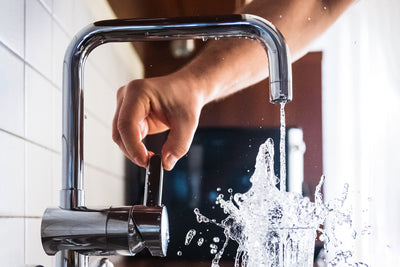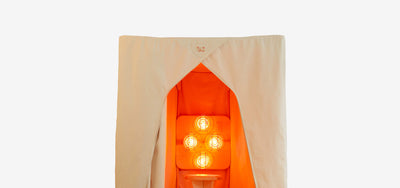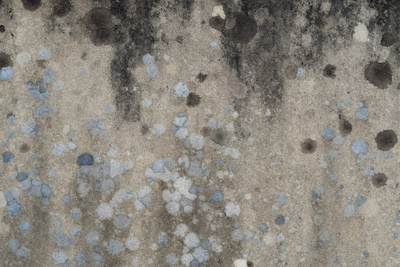Change is in the air: How to purify post-pandemic spaces

Even before the pandemic turned our lives topsy-turvy and locked us inside for weeks on end, we were spending a cabin-fever-inducing 90% of our time indoors. And yet, all-too-often, improving indoor air quality was considered a luxury.
Now, clean indoor air and proper ventilation are more important than ever. With a renewed world focus on buildings that boost wellbeing, we’re looking at how we can make our post-pandemic spaces as healthy as possible – and keep clean, fresh, energising air flowing.
How does dirty air affect wellbeing?
Following the global review that concluded air pollution has detrimental health effects from head to toe, a raft of new research is hitting the headlines.[1] Recent studies show that:
- On average, polluted air shrinks a person’s lifespan by three years.[2] That’s more than smoking and AIDS.
- Being exposed to air pollution is linked to a higher risk of a host of health issues, from irreversible sight loss[3] to infertility.[4]
- The effects aren’t just physical, either. Growing up in dirty air was found to “quadruple” children’s chances of developing depression.[5]
- And it doesn’t discriminate by age: around six million people aged over 65 in England are at “high risk” of lung damage and asthma attacks because of breathing in toxic air.[6]
But it seems we’ve yet to wake up to the extent of the threat posed by polluted air. Just days ago, the UK was found guilty by the European Court of Justice of “systematically and persistently” breaching air pollution limits.[7]
And while you might think closing your front door shuts out the problem, air quality is often worse indoors than out. According to the Environmental Protection Agency, indoor air pollutant levels can be two to five times higher than outdoors.[8] With toxic air trapped by sealed walls and exacerbated by chemical products, cooking, heating and cleaning, our buildings often only intensify the issue. A 2019 report found that 45% of UK homes had “dangerous levels” of indoor air pollution – underlining the uphill battle we face.
Growing up in dirty air was found to “quadruple” children’s chances of developing depression.
Clean indoor air matters now more than ever
While offering safe shelter has been the enduring goal of architecture, pandemic-related risks have triggered a rethink. Long months locked indoors have made the need for healthy buildings mainstream, while an airborne virus that transmits most easily in enclosed spaces has accelerated developments in indoor air quality.
“In the past, improving indoor air quality was considered a luxury,” said a recent scientific review. “Now it needs to be considered essential, and the current pandemic emphasizes the need for efficient techniques for indoor air disinfection and purification.”[9]
From schools to offices, shops to doctors’ surgeries (and, of course, our homes), the focus now sits on strategies to get stale, polluted air out and replace it with fresh, clean, healthy air. For the first time in too long, indoor air quality (IAQ) is finally at the top of the agenda.
“In the past, improving indoor air quality was considered a luxury. Now it needs to be considered essential.”
Ventilation dramatically reduces transmission of disease
Described as “the most critical part of reducing transmission from respiratory viruses”[10], ventilation will play a key role in post-pandemic spaces.
Research on the role of ventilation in controlling Covid-19 transmission stated that “being in a room with fresh air can reduce your risk of infection from particles by over 70%, as fresh air dilutes the particles”.[11]
Meanwhile, the pressure for employers and schools to get ventilation right is growing.
Under new government proposals, offices and commercial properties will have to install better ventilation systems.[12] Consultation documents show that workspaces will have to have systems that can provide fresh air at 50% higher rates than existing minimum standards. Adequate ventilation in schools is also in the spotlight, with some scientists worried by the lack of clear guidance and planning.[13]
“Being in a room with fresh air can reduce your risk of infection from particles by over 70%, as fresh air dilutes the particles”
Clean air enhances overall health
Not only does clean air help stop the spread of disease, but studies have also shown it improves focus and increases scores on cognitive tests.
In a 2011 study,[14] scientists found that better air quality led to “increased work performance, reduced Sick Building Syndrome symptoms, reduced absence, and improved thermal comfort for millions of office workers.” Ventilation has also been shown to reduce the risk of developing allergies, and shorten hospital patient recovery times.[15]
Not only does clean air help stop the spread of disease, but studies have also shown it improves focus and increases scores on cognitive tests.
What can you do to breathe cleaner air?
Ventilate, ventilate, ventilate

“Ventilation—how air flows, where it flows, how much of it flows, and how quickly it’s replenished—establishes the beating heart of a building,” writes fresh air-aficionado Craig Mod in The Atlantic. “Even the most thoughtfully designed room is insufferable if it’s unbearably stale.”
The simplest solution is to increase the air supply, allowing as much outside air in as possible by pushing open as many windows as you can. To help air flow freely and exchange stagnant air for fresh, open windows at opposite ends of rooms and open doors between rooms. Always leave a gap between furniture and walls so that air can circulate fully.
Filter and purify your air to perfection

As well as opening windows and doors, you can drastically improve the quality of your air with an effective filtration system.
After testing many air filters in our time, one brand consistently comes out top for performance and value for money: Radic8.
Proven to remove viruses from the air with a 99.9999% efficiency rate, Radic8’s world-leading VIRUSKILLER™ technology cleans dirty air, kills infected air and neutralises toxic air.
By clearing the air of viruses, bacteria, VOCs, toxic gases and allergens in a single air pass, Radic8 filters enhance indoor infection control (from illnesses, allergies and respiratory issues) and boost wellbeing.
All Radic8 air filters come with a unique reactor chamber in-built, capable of destroying microorganisms at a molecular level using UV light from ozone-free ultraviolet bulbs. Fourteen different patents are associated with this innovative technology, highlighting its originality.
Developed in response to the SARS outbreak in South Korea in 2003, there are now hundreds of thousands of Radic8 installations throughout the UK.
Radic8 air filters were installed inside London classrooms as part of the Mayor of London's recent audit of air quality in nurseries. They were found to help reduce children's exposure to toxic, polluted air, and performed well in a trial against other air filtrations systems.
From the sleek and portable Hextio for use at home to the more powerful VK401 for use in classrooms, commercial buildings, offices and care homes, the Conscious Spaces store has an air filter to suit your space and needs.
Add air-cleaning plants to your home and garden

Scientists at the Royal Horticultural Society (RHS) have identified a “super-plant” that soaks up air pollution on traffic-clogged streets. The Cotoneaster shrub came out tops in an experiment that included hawthorn and western red cedar.[16]
The lead researcher, Dr. Tijana Blanusa, said: “On major city roads with heavy traffic, we’ve found that the species with more complex, denser canopies and rough and hairy leaves such as cotoneaster were the most effective.
“We know that in just seven days, a 1-metre length of well-managed dense hedge will mop up the same amount of pollution that a car emits over a 500-mile drive.”
To replicate these incredible air-filtering effects inside your space, try adding the following plants:
Peace Lily
Adaptable and low-maintenance, the Peace Lily is one of the easiest houseplants to look after.
Filters: Benzene, formaldehyde, ammonia, trichloroethylene, xylene & toluene
Spider Plant
This spidery species is said to be one of the most efficient plants at filtering formaldehyde.
Filters: Carbon Monoxide, formaldehyde, trichloroethylene, xylene & toluene
Areca Palm
The most effective plant for indoor air filtering, according to NASA’s landmark Clean Air Study.
Filters: Carbon Monoxide, benzene, formaldehyde, trichloroethylene, xylene & toluene
Tackle mould

A build-up of humidity or damp weather conditions (something we know all-too-well living in salt-sprayed Cornwall!) can cause mildew and mould to spread. Mould spores can then become airborne, causing inflammation and all sorts of health issues. Exposure to certain types of mould has been linked to respiratory problems, infertility, infections, allergies and more.
To help keep mildew and mould growth at bay:
- Open your windows! Especially when showering or cooking, when you should also close the door and use an extractor fan.
- If your building is prone to condensation, think about investing in a de-humidifier.
- Try probiotic cleaning products. 100% natural, they actively feed on mould and other pollutants. Find We Are Probiotic air purifiers in the Conscious Spaces Shop.
- When you’re away, don’t let your house go cold. Keep the central heating set to 15% to avoid condensation.
- Keep carpets and other fabrics dry and replace your shower curtain regularly.
- Use antimicrobial materials wherever possible. Naturally waterproof and resistant to mould and mildew, cork is great for flooring, mats and even wall finishes.
- Dry washing outside if you can.
These are preventative measures only. We would always recommend seeking professional advice and help before attempting to remove existing mould.
Use natural products and materials

Two of the most significant factors affecting indoor air quality? The fabric of the building itself – and the materials used to furnish it.
From glues to flooring, carpets, paints and varnishes, Volatile Organic Compounds (VOCs) are everywhere – and they’re harmful to health. VOCs are released during the application of materials (like when you paint a wall or lay a new carpet, for example), but they’re also released for years afterwards. The VOCs embedded within a building gradually decay over time as the chemicals evaporate and react, often triggering sensitivities and causing acute symptoms for anyone living or working inside.
The solution? Wherever possible, opt for natural, organic, non-toxic materials and furnishings. Incorporate breathable, eco-and-air-friendly finishes, such as water-based, VOC-free paints and natural clay plaster. Choose vintage or antique furnishings, where the intensity of the fresh-out-the-plastic VOC content will have diminished. Untreated, solid wood is another great option for flooring and furniture, while organic cotton and linen make beautiful bedding and soft furnishings.
Always safely store toxic chemicals (like pesticides and solvents) outside. If possible, refrain from using them inside, and if you really have to, ventilate the place first.
While the pandemic has sparked a welcome surge in interest in healthy indoor environments, we believe that wellbeing should always be at the forefront of building design. Keeping clean, fresh air flowing through the spaces we spend time in should be a necessity, not a luxury – so let’s try to keep it that way.
Shop clean air products here
Learn more about clean air here
References
[1] https://journal.chestnet.org/article/S0012-3692(18)32723-5/fulltext
[2] https://academic.oup.com/cardiovascres/article/116/11/1910/5770885
[3] https://bjo.bmj.com/content/early/2021/01/11/bjophthalmol-2020-316218
[4] https://www.sciencedirect.com/science/article/pii/S0160412020321863
[5] https://www.sciencedirect.com/science/article/pii/S016517811830800X
[6] https://www.asthma.org.uk/about/media/news/around-6-million-over-65s-in-england-living-in-heavily-polluted-areas/
[7] https://www.bbc.co.uk/news/science-environment-56282064
[8] https://www.epa.gov/report-environment/indoor-air-quality
[9] https://www.sciencedirect.com/science/article/pii/S0013935120313682
[10] https://www.vent-axia.com/news/ventilation-plays-critical-role-reducing-covid-19-transmission
[11] https://www.gov.uk/government/publications/emg-role-of-ventilation-in-controlling-sars-cov-2-transmission-30-september-2020
[12] https://www.thetimes.co.uk/article/new-rules-to-improve-air-quality-in-office-space-k2bb6ck6b
[13] https://www.theguardian.com/education/2021/mar/05/schools-ventilation-and-testing-will-be-key-in-englands-big-bang-reopening
[14] https://onlinelibrary.wiley.com/doi/abs/10.1111/j.1600-0668.2011.00719.x
[15] https://www.payette.com/research-innovation/exploring-natural-ventilation-in-the-healthcare-setting/?utm_medium=website&utm_source=archdaily.com
[16] https://www.theguardian.com/environment/2021/feb/18/experts-identify-super-plant-that-absorbs-roadside-air-pollution





































